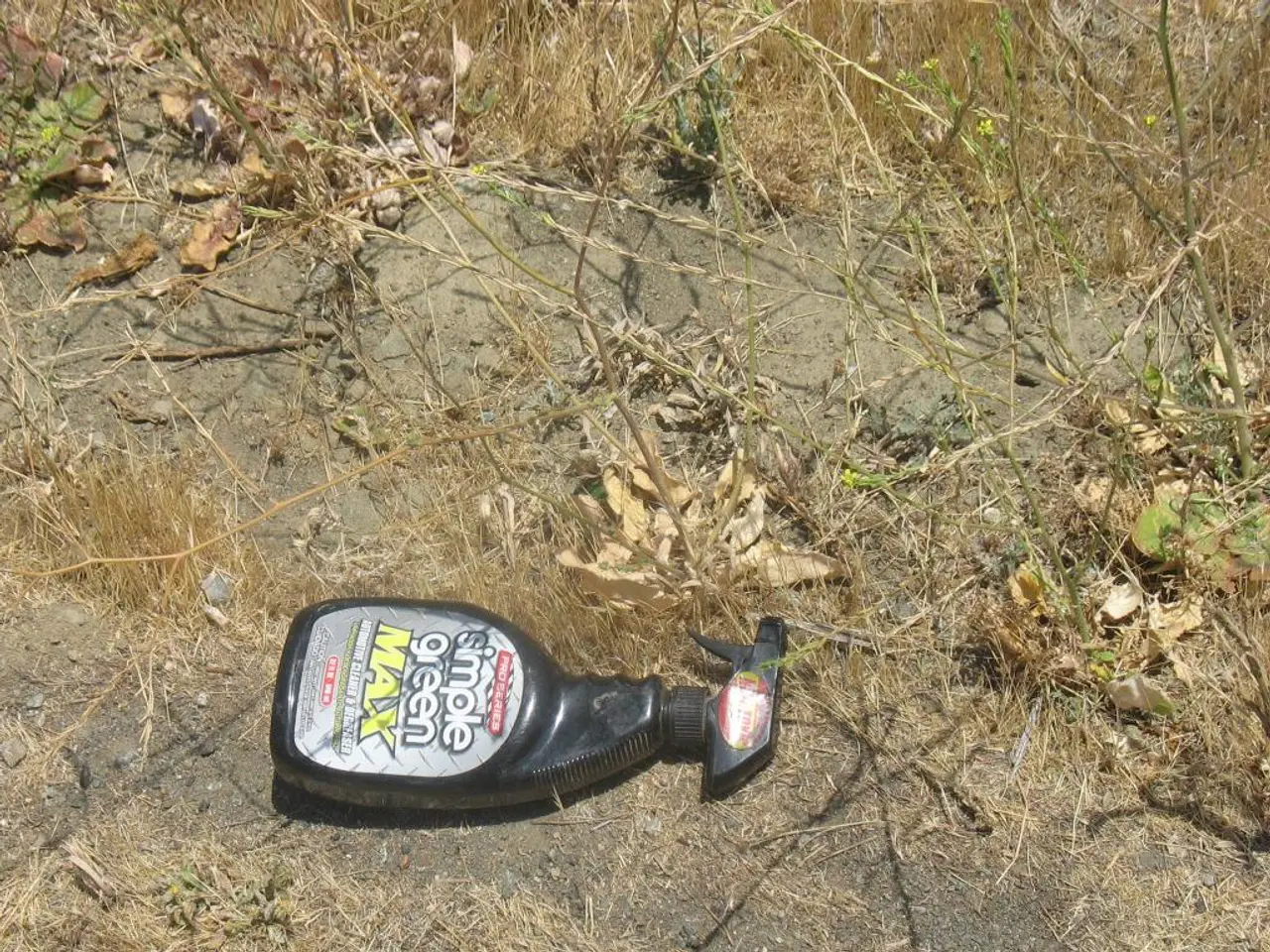Persistence of Herbicides in Compost: Does Weedkiller Survive in Hay?
In the world of gardening, maintaining a healthy soil is essential for a thriving garden. One potential threat to soil health is herbicide carryover, a condition that can affect plants when herbicides remain active in compost and other amendments.
Herbicide carryover occurs when an herbicide that remains active for a long time is either consumed or left behind in hay, straw, clippings, and other organic waste. Common soil amendments such as rotted leaves, straw or hay, shredded newspaper, and other carbon additives can potentially contain herbicide carryover, particularly if they have been treated with persistent herbicides like Pyridine carboxylic acids, which are often used to combat broadleaf weeds in fields.
The presence of herbicide carryover can be difficult to detect, as it can manifest in various ways. Symptoms may include cupped, elongated leaves, stunted growth, misshapen plant material, poor seed germination, and even the death of young seedlings. In some cases, herbicide carryover may resemble herbicide drift or many plant diseases, making it essential to correctly identify the issue.
To prevent such contamination, there are several measures gardeners can take. Firstly, sterile manure and organic hay or straw should be used. Even after manure is composted, the herbicide remains active, so it's crucial to source compost or manure from reliable sources with no recent history of herbicide treatment.
Another preventive measure is to adhere to herbicide label plant-back intervals. These specify how long to wait after herbicide application before planting certain crops to avoid carryover effects. Understanding herbicide labels and rotation restrictions is also essential to avoid contamination.
Bioassay testing is another effective method for detecting herbicide carryover. This involves growing a legume species such as green beans or peas in pots with the amendment mixed into a peat-based potting mix, alongside control pots with only potting mix. Over 2–3 weeks, observe for symptoms like stem curling or leaf cupping. If damage appears, herbicide residues may be present, indicating a carryover risk.
Lastly, clean handling practices are vital in preventing herbicide carryover. Thoroughly clean equipment when moving between fields or handling different materials to avoid transferring herbicides into compost piles or amended soils.
When it comes to free soil amendments from country settings, extra caution is necessary, as they may be the source of grass herbicide carryover. By following these guidelines, gardeners can ensure a healthier, herbicide-free garden.
- In the realm of home-and-garden, practicing careful composting and choosing organic matter wisely is key to limiting herbicide carryover, particularly avoiding materials treated with persistent herbicides like Pyridine carboxylic acids.
- To promote health-and-wellness in both the garden and one's fitness-and-exercise routine, adopting clean handling practices can help prevent the spread of herbicides, such as thoroughly cleaning equipment when moving between fields or handling different materials.
- With a focus on nutrition and overall lifestyle, gardeners can prevent herbicide contamination by sourcing sterile manure and organic hay or straw from reliable sources without a recent history of herbicide treatment, as well as understanding herbicide labels and rotation restrictions.




